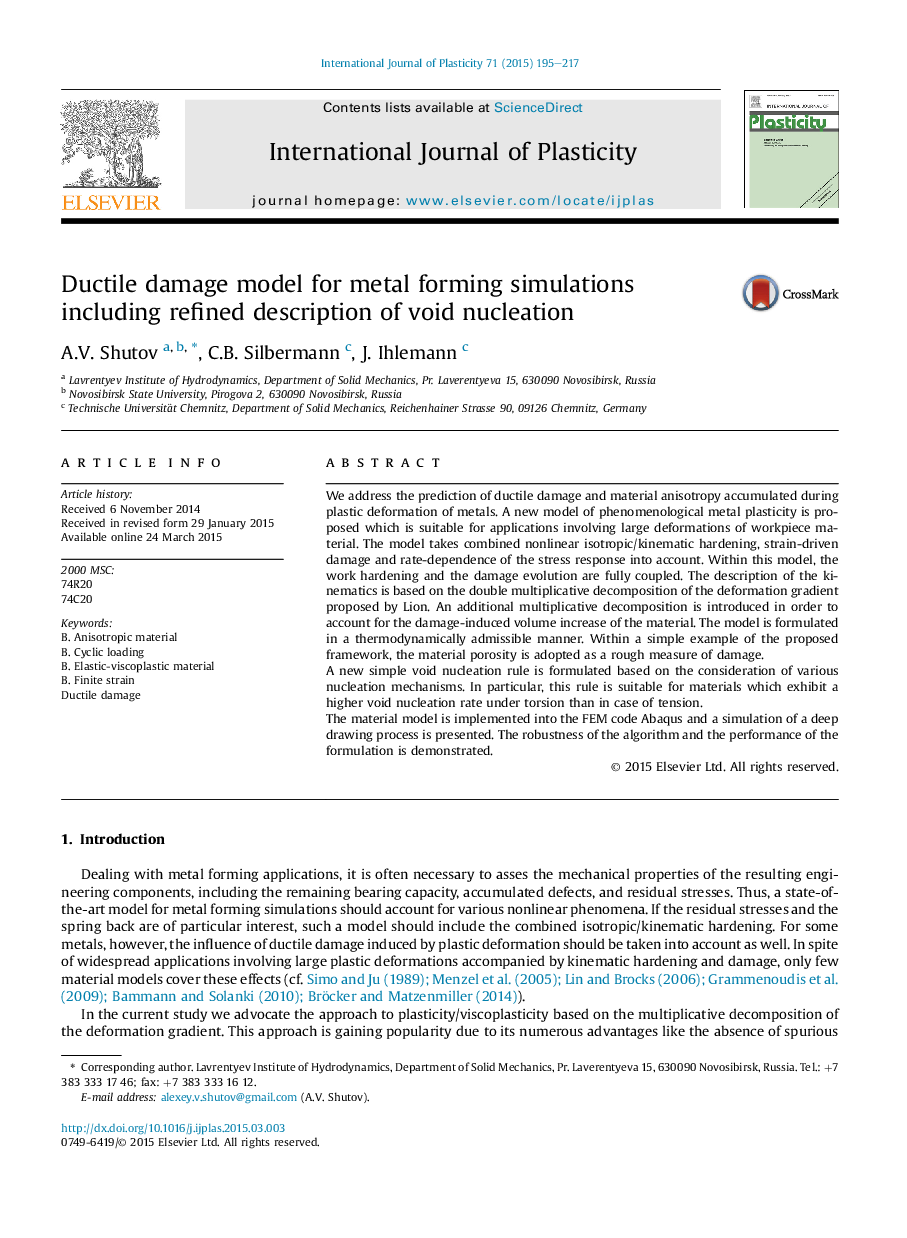| Article ID | Journal | Published Year | Pages | File Type |
|---|---|---|---|---|
| 786095 | International Journal of Plasticity | 2015 | 23 Pages |
•A new phenomenological model of ductile damage at finite strains is suggested.•Damage-induced volume changes and plastic anisotropy are incorporated.•The model is thermodynamically consistent.•A new void nucleation rule is introduced to enrich the formulation.•The model is validated using experimental data for a cast A356 aluminum alloy.
We address the prediction of ductile damage and material anisotropy accumulated during plastic deformation of metals. A new model of phenomenological metal plasticity is proposed which is suitable for applications involving large deformations of workpiece material. The model takes combined nonlinear isotropic/kinematic hardening, strain-driven damage and rate-dependence of the stress response into account. Within this model, the work hardening and the damage evolution are fully coupled. The description of the kinematics is based on the double multiplicative decomposition of the deformation gradient proposed by Lion. An additional multiplicative decomposition is introduced in order to account for the damage-induced volume increase of the material. The model is formulated in a thermodynamically admissible manner. Within a simple example of the proposed framework, the material porosity is adopted as a rough measure of damage.A new simple void nucleation rule is formulated based on the consideration of various nucleation mechanisms. In particular, this rule is suitable for materials which exhibit a higher void nucleation rate under torsion than in case of tension.The material model is implemented into the FEM code Abaqus and a simulation of a deep drawing process is presented. The robustness of the algorithm and the performance of the formulation is demonstrated.
